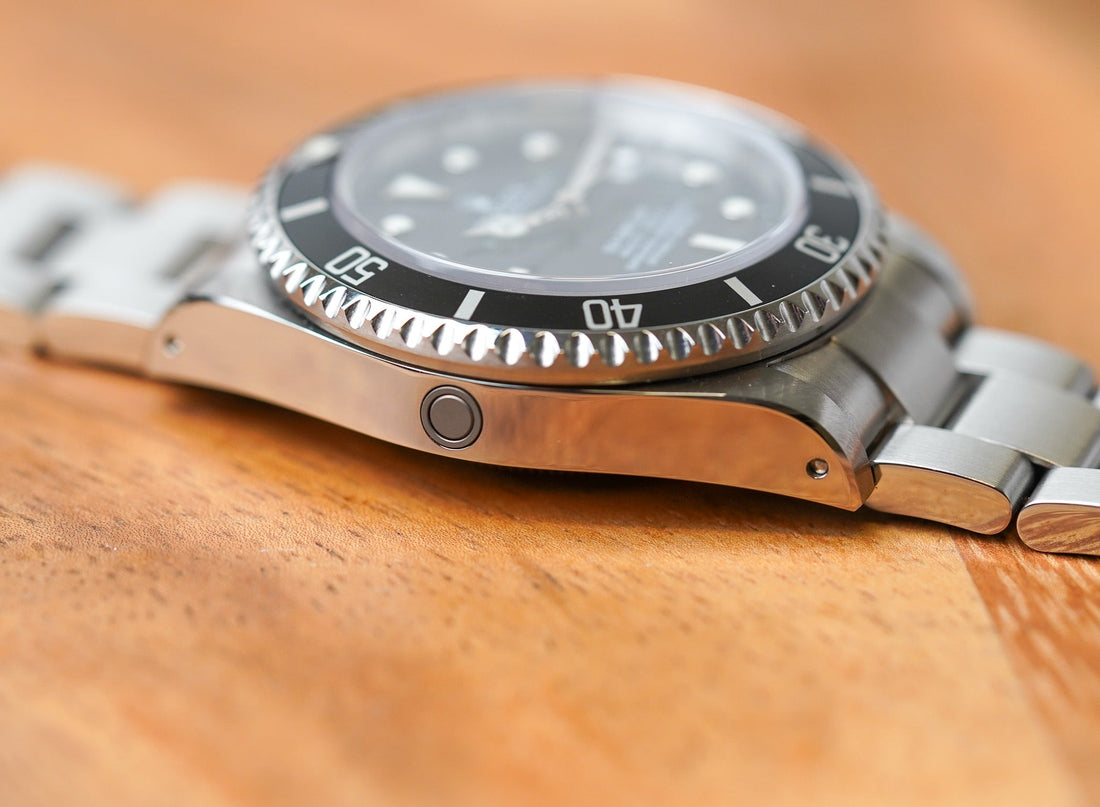
Automatic vs. Manual Helium Escape Valves: What’s the Difference and Why It Matters
Automatic vs. Manual Helium Escape Valves: What’s the Difference and Why It Matters
At Belmont Watches, we get a lot of questions from divers, collectors, and first-time buyers about helium escape valves. What are they? How do they work? Why are some automatic and others manual?
Like a lot of features in the watch world, there is the technical side and then the real-life story behind it. If you have ever wondered what sets automatic and manual helium valves apart, or whether you even need one at all, this post should clear things up.
First Things First: What Is a Helium Escape Valve?
A helium escape valve (HEV) is a pressure-release system built into some professional-grade dive watches. It is designed for saturation diving, where divers breathe gas mixes containing helium and live in high-pressure environments for extended periods.
Helium molecules are so small that they can sneak past the gaskets and seals of a watch case. When the diver surfaces and decompresses, the trapped helium can expand faster than it can escape. This can blow the crystal right off the watch.
The helium valve prevents that. It lets the helium escape safely before pressure builds up inside the case.
Manual Helium Valves: Old School and Hands-On
Manual valves are exactly what they sound like. The diver must unscrew the valve, usually located at the 10 o’clock position on the case, before decompression to release built-up pressure.
Pros of Manual Valves:
-
Simplicity: There is no extra internal mechanism to maintain.
-
Control: You choose when to open or close it.
-
Tool-watch aesthetic: Some people love the look of that extra crown.
Cons:
-
User-dependent: You have to remember to open it at the right time.
-
Potential water risk: If you forget to close it after surfacing and go back in the water, water can get in.
Watches like the Omega Seamaster Planet Ocean and some earlier Rolex Sea-Dwellers used this system for years. It is a proven setup, but it does require a bit of attention from the wearer.

Automatic Helium Valves: Set It and Forget It
An automatic helium valve operates passively. When the pressure inside the watch exceeds the external pressure, the valve opens on its own and vents the helium. When the pressure equalizes, it closes again.
Pros of Automatic Valves:
-
No action required: You do not have to remember anything.
-
Safe by default: If you forget, the watch still protects itself.
-
Cleaner case profile: There is no extra crown or knob sticking out.
Cons:
-
More complex mechanism: Slightly more to go wrong if it malfunctions.
-
Less interaction: Some collectors prefer the tactile feel and control of a manual valve.
Modern Rolex Sea-Dwellers, Doxa Sub 300T Conquistadors, and watches like the Tudor Pelagos use automatic valves. In most cases, you will never notice it doing its job.

Which One Is Better?
For most wearers, neither is objectively better. It just depends on how you plan to use the watch.
If you are a saturation diver, you probably already know which style you prefer. If you are a collector or recreational diver, the valve is more about heritage and design than something you will actually use.
Here is a quick breakdown:
| Use Case | Go For |
|---|---|
| You want absolute convenience | Automatic Valve |
| You like the tactile aspect of vintage dive watches | Manual Valve |
| You never go near saturation depth | Either, since you may never need it |
| You want historical tech and conversation starters | Manual Valve wins every time |
Anthony’s Take
I have handled plenty of both. If I am going diving, I would rather not worry about whether I remembered to unscrew something. But when I am wearing a vintage Seamaster or something like a classic Doxa reissue, I appreciate the old-school manual valves for what they are. They represent real history on the wrist.
If you are choosing between the two, think about what kind of relationship you want with the watch. Some people want to set it and forget it. Others enjoy a bit of interaction. That is part of the fun.
Final Thoughts from Belmont Watches
Whether your watch has an automatic or manual helium escape valve, the bigger point is this. It is a feature born from real-world use, not marketing. It exists because watches were pushed to their limits in some of the harshest environments on Earth.
At Belmont, we carry both types. From Doxa Sub 300Ts with automatic valves to Omega Planet Oceans with manual ones. If you are curious about which fits your lifestyle, or just want to geek out about dive watch tech, we are always happy to help.
